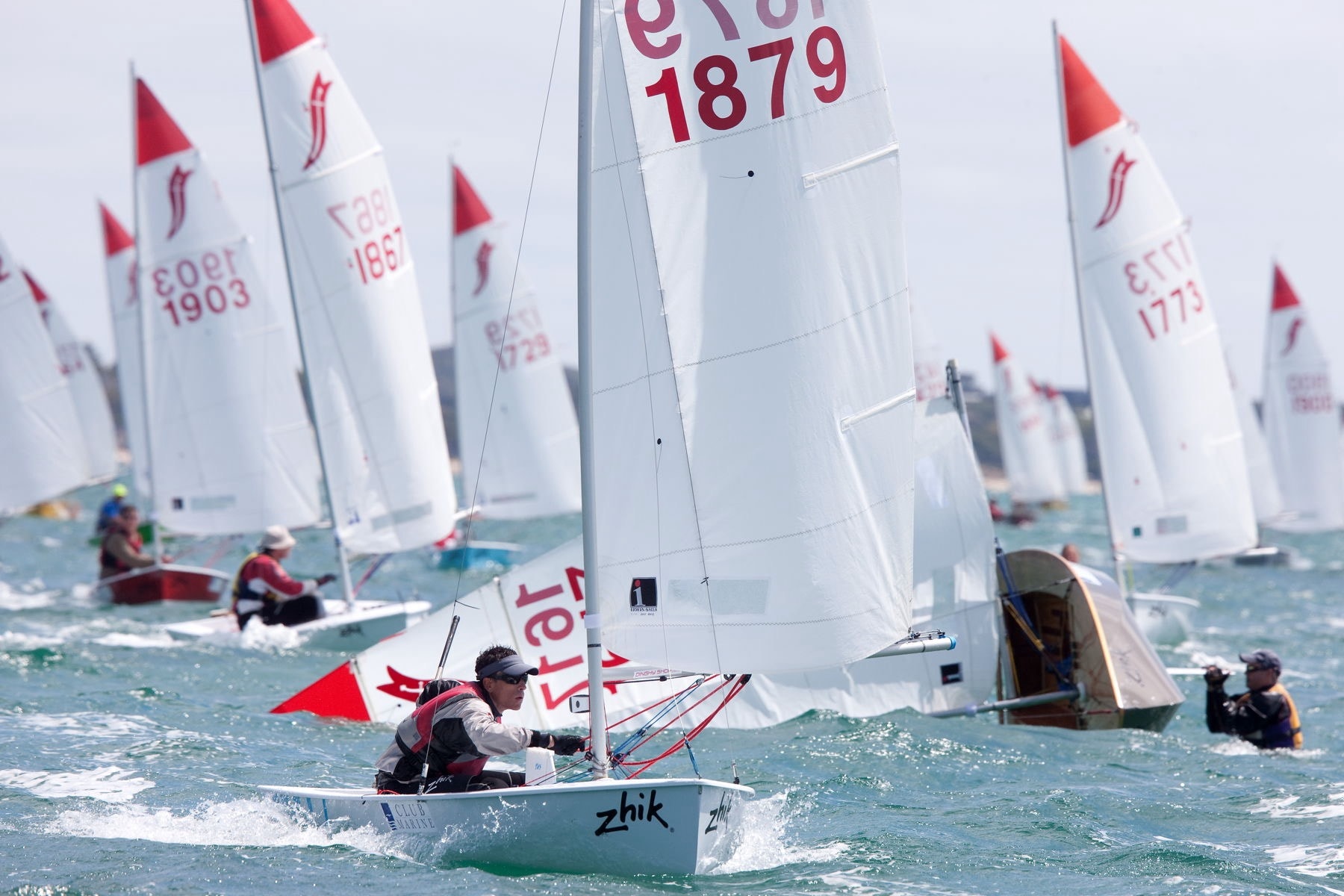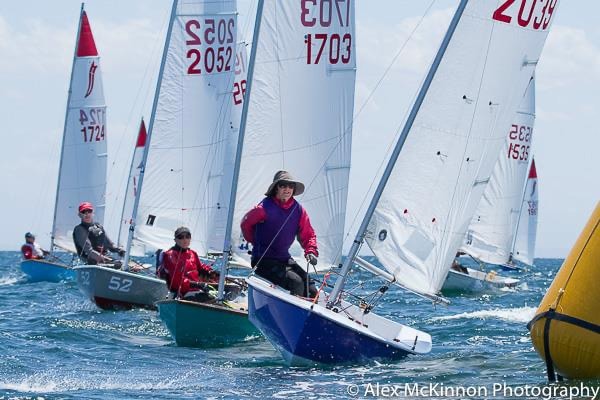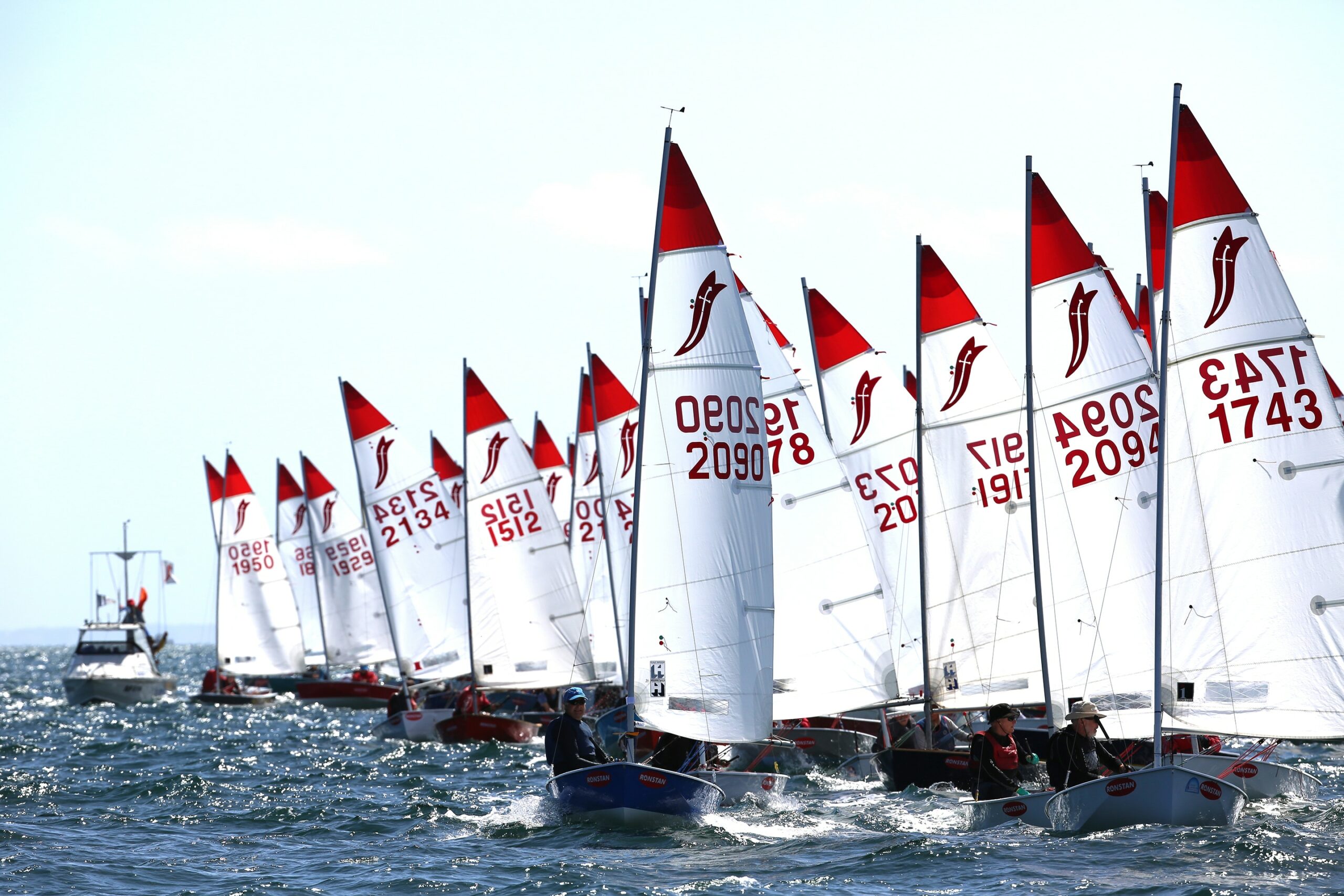Tips & Tricks
COMMON ISSUES & RECOMMENDATIONS
- Think ahead. Where are the close boats likely to be in the next 10-30 seconds? What options do you have? Have a plan that can be altered as other boats do the unexpected.
- Don’t be too aggressive with nearby boats (except close to the finish). They will remember; also other boats will benefit when you are fighting!
- Avoid collisions, even though you are in the right. The infringing boat should “apologise”, take a penalty (normally a 720 turn) as soon as reasonably possible and avoid interfering with other boats when doing so.
- Overtaking boat, particularly when running, must give the boat overtaken room to keep clear, irrespective of who has the right of way.
- The boat tacking close below (lee bow) or just ahead, must keep clear until it completes its tack. Don’t tack in front of another boat which has to change course to avoid a collision.
- Port and starboard. Best if the starboard boat calls loudly ‘starboard’ or ‘keep going’. The port boat may not have seen you.
- Communicate loudly, authoritatively, but not aggressively. Particularly at the start or later in the middle and tail of the fleet, other skippers may not know the rules or may be trying to bluff.


- Port tack boat must keep clear of starboard boats, particularly while tacking. Even in big fleets, you can always pull away and hope to find a gap to get through. If you are close to the mark on port and can’t find a gap, pull away and gybe and then pick a better gap. Don’t try to ram your way through on port! This will not make friends and will lead to a 720 or even worse, damage.
All marks
- When boats enter the 3 boat length zone, the inside boat must be given mark room, even if the overlap is broken afterwards. Useful the inside boat to call loudly ‘3 boat lengths, overlap, buoy room’ to establish buoy room just before the three boat lengths. Alternatively, ‘3 bl, no overlap, no br ‘. Try to get an acknowledgement from the boat behind.
- It is relatively easy to ‘catch up’ on the boat ahead when that boat is rounding the leeward or gybe mark. Thus you must not run inside on the boat ahead when you are inside the 3 boat length zone. Go on the outside. If there are other boats outside you, call for room
- If there is doubt which boat is ahead at the 3 boat length position, the boat ahead before the three boat lengths is normally assumed to have the rights.
Starts
- Several different starting techniques.
- In Sabres, be careful not to run out of speed when luffing. It is embarrassing and may be infringing on other boats if you are going backwards with say 30 seconds before the starting signal!
- If you are over or too close to the line before the start, don’t pull away and run across the bows of the boats that are starting. Best to sense the problem (say one minute) before the starting signal, and move ahead and then dip back to find another starting position. (Normally won’t work with U or black flag starts). Alternatively, and even better, if you have room, just pull away (dip) so that you can line up and start on time.
- If starting at the start boat (sb) end, a close hauled or luffing boat doesn’t have to give you room to squeeze through to miss hitting the sb. Best to assess this early and stop or slow and then start late. After starting you can tack on to port to get clear wind.
- If you are travelling on the port tack particularly in the last minute before the start, keep clear of starboard tackers. Collisions can occur if you barge through narrow gaps. Remember that they are jockeying for position and don’t appreciate having to rapidly change course due to your actions.
- Sabres take time to get up to speed, so don’t be stationary say 8 or less seconds before the start. The lighter the wind, the earlier you need to be travelling at speed.

VIDEOS
SETTING UP FOR SUCCESS
Basic Sail Settings for the Sabre
Sailing upwind, the optimum settings will depend on wind strength and the size and steepness of waves.
In general, the aim is to have good boat speedusing a deeper sail shape in medium breeze, progressively flattening it off as the boat gets overpowered. Overpowered is when you continually need to ease the mainsheet to keep the boat flat. Unless you then change to a flatter setting, the boat will slow down because the sail is too full. You will notice that the boat goes out of balance and drags more on the tiller.
In waves, the aim is to have a bit more depth in the sail to keep the boat powered up through the waves. You can make the sail progressively flatter and sheet tighter when the water is smooth, allowing the boat to sail closer to the wind whilst maintaining boat speed.
Light Wind Upwind. Below 8 knots
Outhaul. Foot of sail about a hand width from the boom at the centre
Downhaul. Just enough tension to leave a few horizontal creases in the luff
Vang. Adjust so that it does not sag but has no tension.
Light Wind: Running and Reaching.
Outhaul. When reaching, release the outhaul to create more depth in the foot of the sail
Downhaul. Release to create more wrinkles
Vang: Just enough tension to prevent the top of the sail going forward of the mast running. Reaching set the top batten parallel to the boom.
Medium breeze Upwind. 8 to 15 knots
Outhaul. As for light wind
Downhaul. Enough tension to remove all horizontal creases. Increase tension as wind increases. This allows the leech of the sail to release wind.
Vang. Increase tension as wind increases.
Medium Breeze Running and Reaching. 8 to 15 knots
Outhaul: As for light wind
Downhaul. As for light wind
Vang. Keep similar tension to 8-15 knots upwind.
Strong wind Upwind. 15 to 25 knots
Outhaul. Progressively flatten the bottom of the sail as you become overpowered. Bar tight at maximum
Downhaul. Pull down increasingly hard as you become overpowered. Really hard in 20 to 25 knots
Vang. Pull on increasingly hard as you become overpowered. Really hard in 20 to 25 knots.
Strong Wind Running and Reaching.
Same as upwind settings but release the downhaul.
General.
Don’t forget to change to upwind settings before you go back up wind. Change back BEFORE the bottom mark.
Sail Control
To many of us, sails are a mysterious source of power…they can look good but slow and other times, ratty but fast. Often the difference between the top sailors and the rest is the ability to recognise when they are sailing fast and be able to reproduce fast settings for different wind and sea conditions.
Most sailors can change settings often enough to hit on good speed, but the top sailors also know when to stop and start sailing…all the adjustments in the world won’t make any difference if you don’t start properly, pick the right windshifts or keep the boat in correct trim.
Generally sails should be rather flat in very light winds (to reduce drag), fuller in moderate winds and flat in heavy winds.
Sail Camber and Sail Twist.
Camber and twist (leech profile) are equally vital to boat speed.
Sail Camber:
Camber has two aspects which you can vary…depth ie. How full the sail is, and position along the chord of the deepest point. You can see how full a sail is by looking up at the curvature of the seams.
Controlling camber.
The depth of curvature is varied by increasing the tension of the cloth across its chord – by vang, outhaul and by mast bend.
The position of the deepest curvature is varied by tensioning the downhaul (Cunningham Eye) or the vang.
The point of greatest curvature moves towards the area of tension.
Increasing pressure on the luff via the downhaul moves the centre of pressure forward; increasing the pressure on the leech via the vang will move the centre of pressure aft.
Downhaul (luff tension)
Basically, increased luff tension does not flatten the sail; it moves the point of maximum camber forward and straightens out the aft section of the sail…it frees the leech. It has an important effect on weather helm and therefore pointing ability.
- Free leech – equates to light helm, less pointing, more speed.
- Tight leech – equates to heavy helm, more pointing, less speed.
Easy adjustment to the downhaul is important.
Note: not keeping the boat flat will cause weather helm, so get it flat before making adjustments.
Outhaul
Easing the outhaul increases low down fullness. It also increases weather helm by powering up the bottom battens and exhausting the air more to windward.
Changing this setting by 10 cm can increase pointing by 2 or 3 degrees.
Mast bend
Sailmakers have two basic methods of cutting draft into a sail.
- By cutting the sail profile with round to the luff. This excess material in the sail converts to draft when the sail is attached to a straight mast. If draft was only achieved by this method, the flow would be too far forward for efficient sailing.
- By using seam taper to bring the flow aft. Round is cut into the edge of panels prior to sewing them together. Draft is positioned towards the centre of the sail. The balance of the luff round to seam taper is a very fine line.
Mast bend changes sail camber by sucking out material from the luff of the sail.
Shape for conditions.
Light wind – sail should be flat with the draft/flow (maximum depth) positioned around 45%-50% aft of the mast. This allows the weak breeze to move easily across the sail surface without stalling. Don’t worry about wrinkles down the luff.
Moderate wind – sail should be full and the draft brought forward to around 40%-45% to provide more power.
Strong wind – sail should be flattened with the draft at about 33% aft to reduce heeling and make the boat more manageable.
Twist:
Twist in aerodynamic terms, is angle of attack and is more difficult to appreciate than camber. The amount that the leech twists away from clew to head is vital to speed.
Too little twist is a sure way of going slow.
Controlling Twist
Twist is controlled by mainsheet, vang and traveller.
Mainsheet
Controls the rate at which the leech falls away to leeward. A good starting point is to trim the top batten parallel to the centreline of the boat.
Vang
The vang does a couple of things and is one of the most important controls. Firstly, it bends the mast low down by pushing the mast forward at boom level. With the vang and outhaul, the lower camber can be finely controlled.
In heavy wind, a large amount of vang can flatten the bottom sections. A good indicator of the required vang tension is the appearance of one or two creases from the clew to the middle of the sail towards the point where the second top batten meets the mast.
This throws the bottom batten off to leeward, reduces excessive weather helm and generally frees the boat from that clogged up feeling.
The vang also controls twist, and it is this for which it is mostly used…especially downwind.
Vang Settings
As a starting point, tension so that the upper leech telltale (between top and 2nd battens) just streams aft, while the lower telltales are just on the verge of lifting.
The upper leech telltale is the most important and if the boat feels chocked or speed drops off, check that it is not stalled…immediately ease the mainsheet until it flows and then tension until it is just flipping off.
Traveller (mainsheet hawse)
The traveller controls the overall angle the sail meets the wind…angle of attack. The lift generated by a sail is varied by changing draft or the angle of attack.
